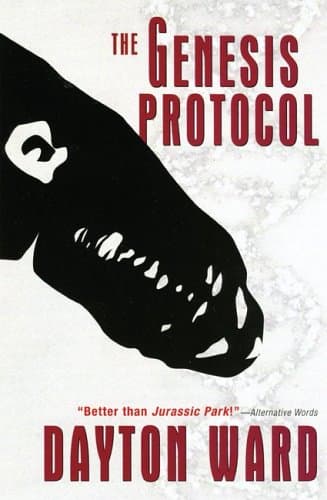
Dayton Ward The Genesis Protocol
Value For Money
Dayton Ward The Genesis Protocol
When you purchase through links on our site, we may earn an affiliate commission. Here's how it works.

User Reviews
Value For Money
The Genesis Protocol Dayton Ward Phobos,
The Genesis Protocol
Dayton Ward
Phobos, Jan 2006, $14.99, 354 pp.
ISBN 0977070808
It was a scientific project that began with the best of intentions and in the four decades of its operation much good has come out of it. Deep in the Utah desert an isolated project known as the Genesis Protocol is going strong protected from intruders by the military. Scientists have created new life forms both plant and animal, mostly toxic as a way of cleaning up the environment. For example, a genetically modified fish who can survive in toxic areas can eat up oil spills.
One day while checking on a malfunctioning piece of equipment in a toxic zone, two scientists are killed by creatures that are not supposed to exist. Dr. Elizabeth Christopher and her group in ObStat 4 are attacked by the same creatures and call for help at the main compound. Security can't destroy the cross-species genetically created lizards known as harbingers that walk on two feet and have opposable thumbs. A marine force reconnaissance mission is called in to extract the survivors, but the leader of the Genesis Project Dr. Geoffrey Bates is not telling everything he knows; that could result in more deaths from creatures that seem to apply human logic to problem solving.
THE GENESIS PROTOCOL is better than Jurassic Park because the disaster is caused by scientific application to clean up hazardous wastes and spills that in real life are already beyond the basic theory phase of development. The problems start when politicians interfere with scientific research by engineering the creation of harbingers, intelligent creatures controlled by humans who can search and destroy, clean up toxins and other dangerous tasks. Dayton Ward provides a strong cautionary tale as to how far science should go and if any should restraints be placed on research.
Harriet Klausner
Q&A
There are no questions yet. Be the first to ask a question.